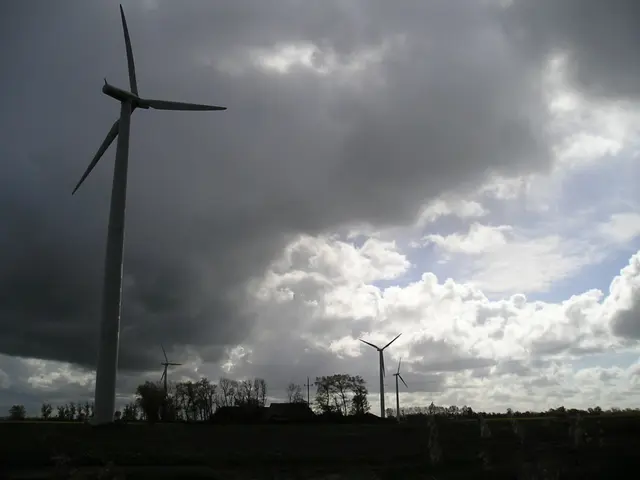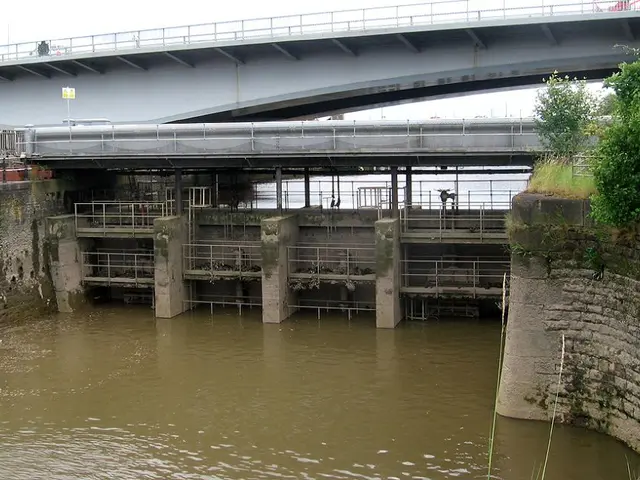Energy from Vineyard Wind now flowing into the electrical system
In the heart of the United States, a green revolution is underway as states in the Northeast are taking bold steps towards renewable energy development. Here's a roundup of the latest news from Maine, Massachusetts, and New York.
Maine's Green Leap
Maine is calling for proposals for renewable energy developments that could provide up to 1,600 gigawatt-hours of power. The state has given bidders just two weeks to submit their proposals, setting a fast pace for this ambitious project. One proposal comes from a Pennsylvania-based construction company, which plans to build Maine's first pump hydro storage project in the western part of the state, as reported by the Bangor Daily News.
Massachusetts' Green Transition
In Massachusetts, Newton and its utility companies, National Grid and Eversource, have entered into a "first of its kind" collaboration to plan the city's transition away from natural gas. Meanwhile, the city council in Lowell is looking for ways to promote sustainable alternatives to diesel fuel, as a manufacturing facility considers expanding its use of diesel-powered backup generators.
Vineyard Wind, an offshore wind farm off Massachusetts, has sent power to the grid from 17 of its planned 62 turbines, with another six fully installed. The country's oldest continually operating museum, the Peabody Essex in Salem, has announced an agreement to meet the energy needs of its 23-building campus with renewable power.
New York's Environmental Battles
New York is facing a lawsuit from environmental justice and climate advocates over the state's failure to launch a promised cap-and-invest program. The program, if implemented, would charge polluters for their carbon emissions and reinvest the proceeds in clean energy projects.
On a positive note, most Massachusetts heat pump owners will have access to lower electricity rates this winter, with state regulators considering deeper discounts for heating seasons to come.
However, the state's efforts to ban natural gas in new buildings starting in 2026 has been upheld by a federal court. Yet, the Trump administration's cancellation of a $4.9B loan for the biggest transmission line in the US has raised concerns about the future of renewable energy infrastructure.
Challenges Ahead
Not all news is positive, as some Maine electricians find themselves idle as two major solar jobs are canceled in the face of the looming end of federal solar tax credits. Furthermore, a company that fueled the US grid storage boom, Powin, is currently undergoing restructuring.
Activists have pledged to fight any efforts to lift a longstanding ban on fracking in the Delaware River Basin due to concerns about President Trump's efforts to bolster fossil fuels.
A bipartisan group of 10 governors has demanded more oversight of grid operator PJM due to record-breaking capacity prices that may increase consumers' bills next summer. New York Gov. Kathy Hochul has announced $200 million to help schools buy electric buses, but some officials say the money is insufficient as school districts face a mandate to fully electrify their fleets by 2035.
A Promising Future
Despite these challenges, the green revolution in the Northeast continues to gather momentum. The growth of public EV chargers in the US is steady, as shown in a recent chart, and offshore wind farms like Vineyard Wind are making significant strides.
As these states and cities continue to push for renewable energy, we can look forward to a cleaner, greener future.
Read also:
- Large-scale SEA-EYE rescue operation in the central Mediterranean: 144 individuals saved
- Proposal requested for a directive safeguarding natural resources and ecosystems, as directed by the Commission.
- Demonstrators advocate for enhanced medical treatment for cystic fibrosis patients in Latvia
- Brown Grass Turning Green: A Detailed Timeline and Methods Guide








